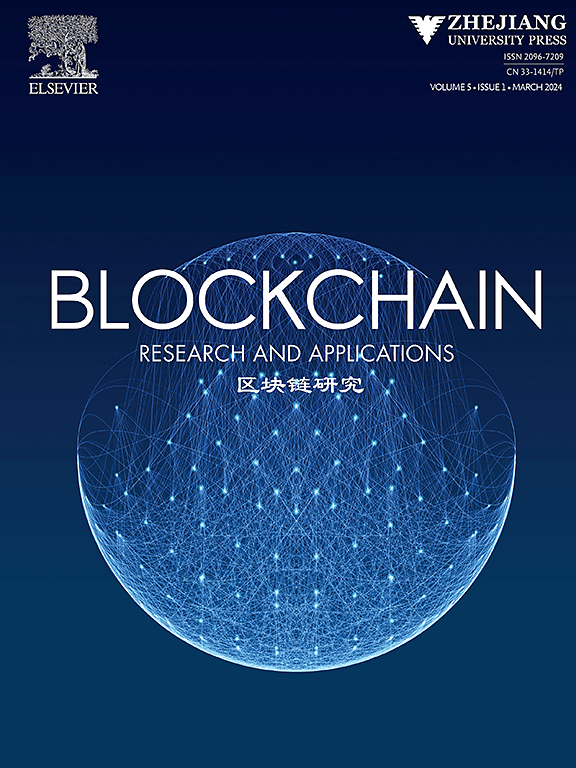Coordinating REST interactions in service choreographies using blockchain
IF 5.6
3区 计算机科学
Q1 COMPUTER SCIENCE, INFORMATION SYSTEMS
引用次数: 0
Abstract
In Service Oriented Computing (SOC), different services interact and exchange information to reach specific objectives. To model interorganizational SOC systems, choreography modeling languages have emerged to represent the distributed coordination among the involved organizations. From the realization perspective, blockchain technology is emerging as a promising run-time supporting peer-to-peer communication technology without the need for a central coordinator, thanks to its intrinsic security, trust, and decentralization characteristics. However, while blockchain can bring many advantages, technological barriers still limit its adoption in organizations, due to the costly and time-consuming learning process. For this reason, we propose RESTChain, a framework that automatically enables the interactions that take place among the participants in a service choreography exploiting blockchain technology. Starting from a choreography specification, the framework provides a set of mediators and automatically generates a smart contract that coordinates the service interactions. The mediators are software components that are directly connected with the smart contracts and expose REpresentational State Transfer (REST) APIs in compliance with the role played by the organizations in the choreography. In this way, the services deployed by one organization can communicate with the services made available by another organization through the blockchain in a secure and transparent manner. The proposed approach has been implemented on the Layer 2 Polygon blockchain and validated in a market retail case study analyzing its efficiency in terms of time and cost.

使用区块链协调服务编排中的REST交互
在面向服务的计算(SOC)中,不同的服务相互作用并交换信息以达到特定的目标。为了对组织间的SOC系统进行建模,出现了编排建模语言来表示相关组织之间的分布式协调。从实现的角度来看,区块链技术正在成为一种有前途的运行时支持点对点通信技术,而不需要中央协调器,这得益于其固有的安全性、信任度和去中心化特征。然而,尽管区块链可以带来许多优势,但由于学习过程昂贵且耗时,技术障碍仍然限制了它在组织中的采用。出于这个原因,我们提出RESTChain,这是一个框架,它可以自动启用利用区块链技术的服务编排参与者之间发生的交互。从编排规范开始,框架提供了一组中介,并自动生成协调服务交互的智能合约。中介是与智能合约直接连接的软件组件,并根据组织在编排中所扮演的角色公开REpresentational State Transfer (REST) api。这样,一个组织部署的服务就可以通过区块链以安全和透明的方式与另一个组织提供的服务进行通信。该方法已在第2层多边形区块链上实现,并在市场零售案例研究中进行了验证,分析了其在时间和成本方面的效率。
本文章由计算机程序翻译,如有差异,请以英文原文为准。
求助全文
约1分钟内获得全文
求助全文
来源期刊
CiteScore
11.30
自引率
3.60%
发文量
0
期刊介绍:
Blockchain: Research and Applications is an international, peer reviewed journal for researchers, engineers, and practitioners to present the latest advances and innovations in blockchain research. The journal publishes theoretical and applied papers in established and emerging areas of blockchain research to shape the future of blockchain technology.

 求助内容:
求助内容: 应助结果提醒方式:
应助结果提醒方式:


